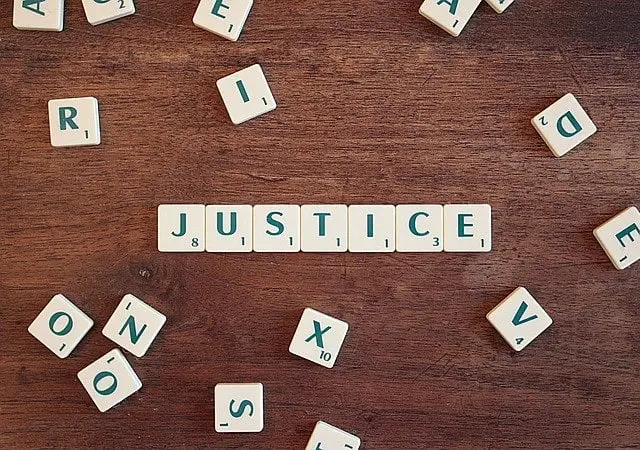Breaking and Entering: An In-Depth Legal Analysis (Part 1)
In the world of criminal law, few terms are as evocative and complex as Breaking and Entering (B&E). This concept, rooted deeply in legal history, continues to play a pivotal role in the modern judicial system. Understanding B&E requires a journey through time, exploring its evolution from ancient common law to contemporary statutes.
The Dawn of B&E in Legal History
The term ‘Breaking and Entering’ originated in the common law era, a time when laws were not written but were customary and known to the populace and the judiciary. In these early days, B&E was intrinsically linked with burglary, typically defined as the breaking into a house at night with the intent to commit a felony. This definition was not just legalistic but stemmed from a societal need to protect one’s home, considered a sanctuary and a place of rest.
During medieval times, the night aggravated the offense of B&E. The cover of darkness not only made it easier for criminals to commit their acts unseen but also heightened the sense of vulnerability among homeowners. The law, therefore, imposed stricter penalties for nocturnal offenses, reflecting the era’s value system and technological limitations, such as the absence of advanced security systems or adequate street lighting.
From Nighttime Felony to Daylight Crime
As society progressed, so did the interpretation of B&E. The industrial revolution, urbanization, and technological advancements brought new challenges and perceptions. The strict requirement of ‘nighttime’ began to fade, broadening the scope of B&E to include daylight incidents. This shift acknowledged that the potential harm and threat of B&E were not confined to the night.
Moreover, the range of properties considered under B&E expanded beyond residential houses. With the growth of commercial spaces, factories, and later, digital properties, the law adapted to include these areas under the purview of B&E. This expansion was not merely a legal formality but a response to the changing landscape of property ownership and societal values.
The Legal Evolution: Adapting to New Societal Norms
The evolution of B&E laws also mirrors broader societal changes. As communities became more complex and diverse, the legal system had to adapt. This included redefining what constituted ‘breaking’ and ‘entering.’ Traditionally, breaking involved physical force, such as shattering a window. However, modern interpretations have broadened this to include any form of unauthorized entry, whether by force or deception.
Breaking and Entering: An In-Depth Legal Analysis (Part 1 Continued)
The Intricacies of ‘Breaking’ and ‘Entering’
As the concept of B&E evolved, so did the understanding of its key components: ‘breaking’ and ‘entering.’ Historically, ‘breaking’ was interpreted quite literally. It encompassed physical actions like smashing a window or kicking down a door. However, with time, this definition expanded. Legal interpretations began to recognize actions such as picking locks, using duplicate keys without authorization, or even tricking someone into opening a door as forms of ‘breaking.’
Similarly, ‘entering’ underwent a transformation in its legal interpretation. Originally, it implied a physical intrusion, where an individual had to physically move into a space to commit a crime. Modern legal frameworks, however, recognize even the slightest intrusion — such as reaching an arm through an open window or manipulating a security system from outside — as constituting ‘entering.’
Emergence of Constructive Breaking
An important development in the realm of B&E is the concept of ‘constructive breaking.’ In earlier times, the law required a tangible, physical breach for a charge of B&E. However, as legal systems evolved, so did the understanding of what constitutes a ‘break.’ Now, gaining entry through fraud, threats, or coercion is also recognized as breaking. For example, if someone intimidates a homeowner into opening their door and then enters the property without permission, it is considered constructive breaking.
Adapting to Modern Society and Technology
The transition of B&E laws into the modern era is not merely a reflection of changing legal thought but also a response to technological advancements. In a time when security systems are digital and property extends into the virtual realm, the traditional notions of physical breaking are constantly being challenged. Today, hacking into a computer system is also seen under the purview of B&E, adapting the age-old crime to fit the digital age.
Global Perspectives on B&E
It’s also crucial to note that the interpretation and enforcement of B&E laws vary globally. Different countries and jurisdictions have adapted the basic principles of B&E to fit their legal systems and societal needs. This global perspective is essential in understanding how B&E is viewed and prosecuted in various parts of the world.
Breaking and Entering: An In-Depth Legal Analysis (Continuation and Conclusion)
Modern Legal Definitions and Nuances Across Jurisdictions
In the contemporary legal landscape, B&E is defined with notable variations across different jurisdictions. For instance, in some regions, the intent to commit a felony or theft once inside the property is a prerequisite for B&E charges, while in others, the unauthorized entry itself is sufficient. These nuances significantly affect the prosecution and defense strategies in B&E cases.
Legal systems also differ in their categorization of B&E in relation to burglary and trespass. While some jurisdictions treat B&E as a subset of burglary, others categorize it distinctly, often based on the intent and circumstances of the crime. For instance, if the entry is with the intent to commit violence, it might escalate the charge from simple B&E to aggravated burglary.
Contemporary Implications and Case Studies
B&E’s implications in the modern judicial system are profound and multifaceted. This crime often serves as a gateway to more severe offenses, making its early detection and prosecution vital for crime prevention. Law enforcement agencies and the judiciary frequently face challenges in addressing B&E due to its varying nature and the evolving methods employed by perpetrators, especially with the advent of technology.
Case studies of B&E incidents play a crucial role in understanding and adapting legal responses to these crimes. They provide insights into the criminal mind, the effectiveness of current laws, and areas needing reform. For instance, a case involving B&E through digital means, such as hacking, highlights the need for cyber laws to be integrated into traditional B&E statutes.
B&E in the Digital Age: A New Frontier
The digital age has expanded the scope of B&E to include cybercrimes, such as unauthorized access to computer systems and data breaches. This evolution poses new challenges for the legal system, necessitating updates in legislation and law enforcement practices. The concept of ‘breaking’ in the digital realm does not involve physical force but unauthorized penetration of cybersecurity barriers. Similarly, ‘entering’ pertains to gaining access to digital data or networks. As society becomes increasingly digital, the legal interpretations of B&E continue to evolve, reflecting the need to protect virtual spaces as vigorously as physical ones.
Global Perspectives and Future Trends
B&E laws around the world reflect diverse legal, cultural, and societal perspectives. This global variation necessitates an understanding of international legal principles for effective cross-border law enforcement cooperation, especially in cases involving digital B&E.
Looking towards the future, it’s evident that the concept of B&E will continue to evolve. Legal systems worldwide will need to adapt to technological advancements and changing societal norms. Future trends may include more explicit laws addressing digital B&E, increased international collaboration in law enforcement, and evolving judicial interpretations to keep pace with technological progress.
Conclusion: A Legal Concept in Constant Evolution
Breaking and Entering, a term once confined to the physical act of intrusion, now encompasses a broad spectrum of actions in our increasingly digital world. Its evolution from a straightforward common law offense to a complex statute addressing both physical and digital realms exemplifies the dynamic nature of legal concepts. Understanding B&E’s past, present, and potential future is crucial for legal practitioners, law enforcement officers, and the general public, reflecting the ongoing need to balance the protection of property and privacy with the challenges posed by technological advancements.
















